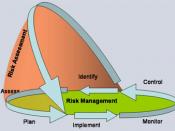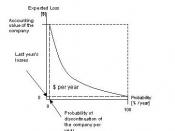Pressure Sores, also known as decubitus ulcers or bedsores, have always been a problem for nurses caring for chronically ill, immobile and elderly patients in the tertiary care setting. This problem is exacerbated by modern medical interventions which have allowed us to extend the life expectancy of these patients, well into old age. As a result, previous illnesses such as pneumonia, which would have claimed the lives of these patients, has become less of a problem. However, with increasing age, immobility and frailty, pressure sores are more likely to develop and many assessment tools have been developed to try to ascertain the risk, and implement preventative measures to inhibit their development, The cost of pressure sores has been estimated to cost ã300 Million (Waterlow,1988), without considering the obvious pain and anxiety it causes to our patients. We will look at these tools, and the preventative measures later in the essay, but first it is necessary to review the aetiology of pressure sores, and their formation.
Aetiology of pressure sores
The skin is an excellent defence against pathogens and the elements, but was not designed to have a constant load of pressure on it. This is particularly true in areas where the skin is in close proximity to bone, such as in the knees, sacrum, pelvis, elbows and heels. (See appendix Fig. 1-3.) It is in these areas that pressure sores are susceptible to form.
"A pressure sore is an area of localised damage to the skin and may involve underlying structures. Tissue damage can be restricted to superficial loss or extend to involve muscle and bone." Banks (1992) PG. 42
Pressure sores can be divided into several grades of increasing severity, (Table 1) as devised by Torrence (1983).
Also found are CLOSED PRESSURE SORES, where the surface remains...



Rating
This essay is good and has a lot of strong pionts but it has not actual personal piont of views and it relates too much to the book on hand! if the author thought more about the thesis and wrote a brief description and personal comments about it them it would be better
4 out of 4 people found this comment useful.